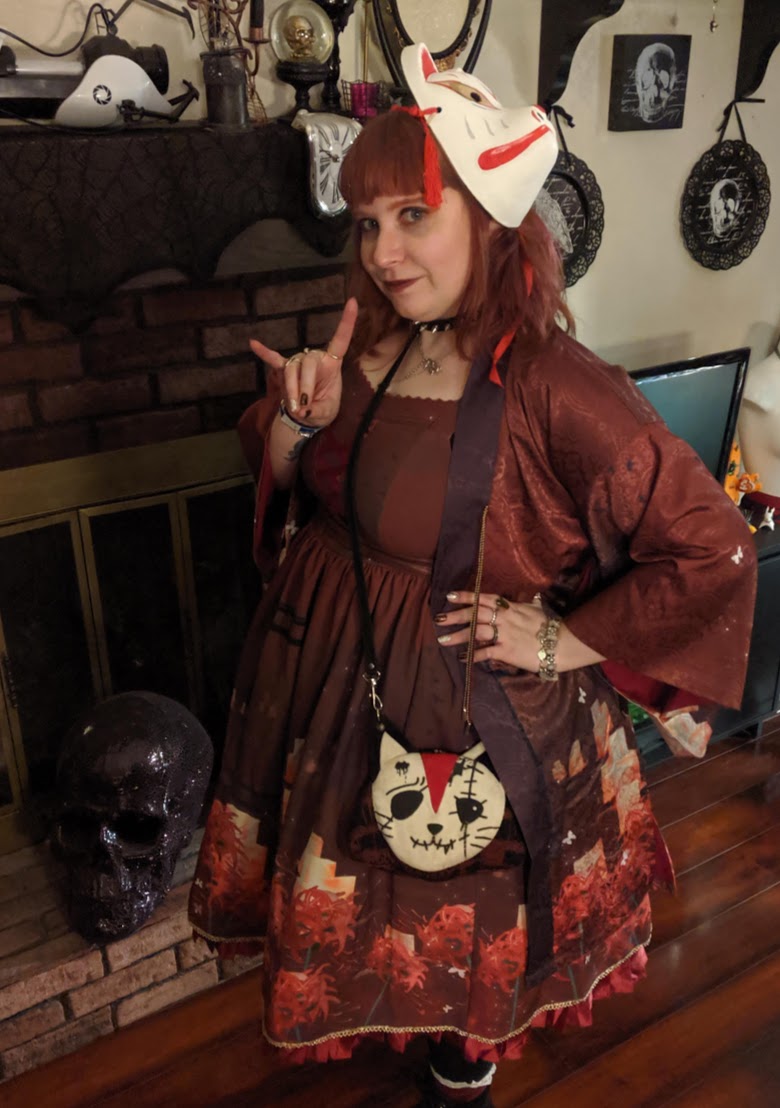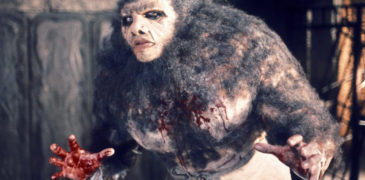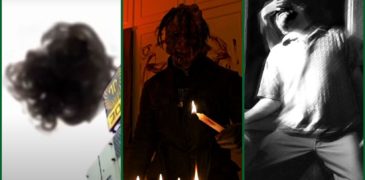
While this film is initially easy to write off as superficial with cheaper scares, I feel that it deserves much more credit and a deeper dissection. With a severe spoiler warning, let’s take a look at some of the deeper themes that make Carved: The Slit-Mouth Woman stick out as a film worthy of theTartan Asian Extreme label.

The film opens with an interesting montage of all of the rumors that have circulated concerning Kuchisake Onna, yet segues into a child abuse case. This immediately grounds it. We feel protective of the child and want to save her from the situation.
Throughout the film, several abusive mothers are presented, one of which becomes Kuchisake Onna herself. Through this connection, she is able to possess any mother. I found that ability very telling of the screenwriter’s interpretation of motherhood. Even though there were kind mothers in the film, and even some of them were possessed, none of them were able to fight or stop Kuchisake Onna on their own. Through this, I felt that the screenwriter was saying that all mothers have this dark impulse, this potential- or even desire- to cause harm to their children. Not that it is necessarily their fate, but something that must be kept in check and cautioned against.
I also found it fascinating that two of the “terrible” mothers could be considered in a positive light at times, or even reformed, depending on one’s interpretations of the film. While I do not forgive either of them myself, and am still rather skeptical about one, it was a portrayal that we seldom ever see that was an incredibly interesting choice on the screenwriter’s behalf.
Another easily dismissed aspect that deserves deeper consideration is the fate of each child. I believe each was very intentional by Kuchisake Onna, and each has a deeper meaning. Let’s examine several. Natsuki, who easily had the most loving parents in the film, gets her mouth slit, but is left alive and is able to escape thanks to Mika. Once she escapes, she is not hunted down, but is left alone in the loving care of her family and recovers.

The first boy who was kidnapped from the playground, whose mother we never meet, but we can assume isn’t very active in his life, gets killed. Yet he wasn’t actively tortured. That seems to be a parallel for the level of his relationship with his mother.
For Mika, who had a very horrible relationship with her mother, but an arguably passionate one, Kuchisake Onna tends to focus on her as the prize, going after her repeatedly, beating her, not killing her quickly at all. She seems to like repeating the patterns and connecting with victims that remind her of her own children, perhaps even seeking to find forgiveness from them?
In the end, while Noboru was able to cut off her head, it was still a possessed body and not her actual corpse, so the pattern will continue. While this gives us the traditional, “Ha, it’s still happening” ending, I also like that it demonstrates a forethinking on Kuchisake Onna’s part. If she was taking her victims down to the cellar in a possessed body, wouldn’t it make sense to hide her own corpse in another area first? Thus, this one felt more natural and feasible to me than most of them.
I hope you appreciated my thoughts on Carved, and that it gave you more insight into this dark portrayal of child abuse and urban legend.
More Film Reviews:
Frankenstein and the Monster from Hell (1974) Film Review | Hammer Horror
In 1934, vaudevillian Will Hammer (real name William Hinds) diversified into the film industry. Hammer Productions Limited joined forces with Spanish entrepreneur Enrique Carreras to create Exclusive Films Limited, before…
Haunting of the Queen Mary (2023) Film Review – A Disastrous Shipwreck
As a seasoned horror fanatic, I eagerly anticipated the 2023 release of director Gary Shore’s Haunting of the Queen Mary, expecting spine-chilling thrills and a captivating storyline. I grew up…
Biotherapy (1986) – An Unknown Japanese Sci-Fi Horror Short
Biotherapy is a Japanese 1986 sci-fi horror that’s aptly described as a slasher merged into a splatter creature feature. The short movie was released as a project from the limited…
Minore (2023) Film Review – Greek Sci-fi Horror [FrightFest]
Minore is a 2023 Greek sci-fi horror comedy, written and directed by Konstantinos Koutsoliotas, with additional writing from Elizabeth E. Schuch. Although mostly known as a visual effects artist who…
The Heirloom (2005) Film Review – Don’t Keep Dead Fetuses in Jars and Feed Them Blood, Mmkay?
With the Japanese and Korean booms in horror overshadowing other nations regionally, we don’t tend to see as many other Asian cultures represented often. The Heirloom is a Taiwanese flick…
Celebrating The Best Hidden Gems of The Found Footage Horror Genre (Part 2)
Welcome to the second part of our list Celebrating The Best Hidden Gems of The Found Footage Horror Genre! We covered a lot of ground already, but have just as…

Hello, I’m Quinn. Saying I’m deeply into fashion and Japanese culture is an understatement. We’ve renovated entire rooms of our house to dedicate to my collections of lolita and other Japanese fashions. I enjoy balancing the cute with the macabre, and the more disturbing it is, the more I’ll enjoy it. Thus, my love for Asian horror and manga was born. Thank you for taking the time to read my writings. I look forward to discussing films and aesthethics with you!




![Minore (2023) Film Review – Greek Sci-fi Horror [FrightFest]](https://www.grimoireofhorror.com/wp-content/uploads/2023/08/Minore-202310-365x180.jpg)

